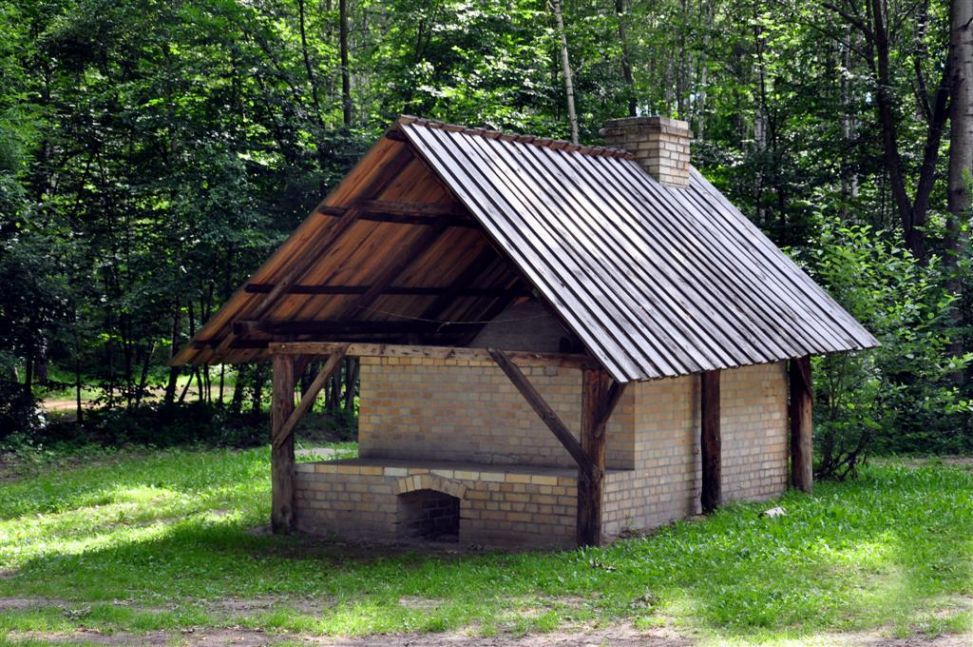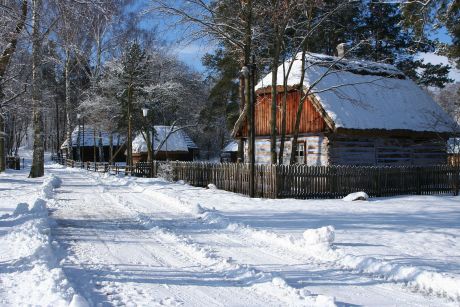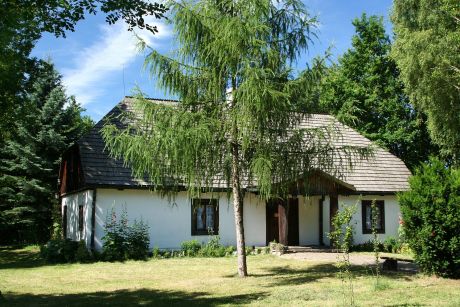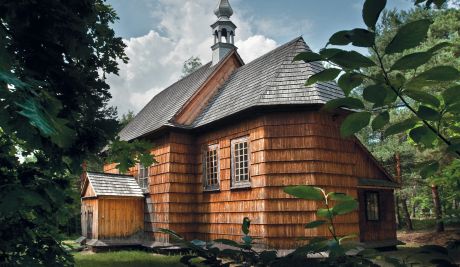The building is a reconstruction of a stove for burning of ceramics, which is located in a pottery workshop of Stefan Kwapisz in Rędocin. The oven is the first part of the potter’s farm, planned as an element of a small-town complex.
Pottery in the region of Radom Radom
Radom is surrounded by a few towns which were formerly known as big pottery centres. One of the greatest among them was Iłża. The first information about potters from Iłża dates back to the 15th century and describes privileges granted to the local guild of potters as well as popularity of products coming from Iłża. It has been known that in 1860 the town offered ser vices provided by 50 professionals, 20 apprentices and 30 disciples. However, the 20th cen - tury saw a decay of pottery in Iłża. The town could not stand the competition of the industry which provided the village with permanent and cheap metal pots.
In 1937, when the guild of potters was dis sol ved, clay moulding was still performed by per sons, such as amongst other: Sta nisław and Fran - ciszek Pastuszkiewicz, Filip, Jan and Ste fan Ciepielewski, Jan and Antoni Kitowski, Jó zef Godzisz, Wła dysław Grusz czyński, Sta ni sław Kosiarski and Piotr Księ ski. Some of them were known in Poland and around the world. For example Stanisław Pas tuszkiewicz and Piotr Księski were dis tin guished on an exhi bi tion of ceramics in Berlin in 1973. In 1967 pot tery was still per formed only by Jadwiga Ko siarska. The second centre was Głowaczów. The first written information about local potters there dates back to the beginnings of the 19th century, whereas it has been known that a century later Głowaczów provided pottery services rendered by several families.
The best-known of them included: the Oficjalskis, the Gabalskis, the Piwowarskis, the Wil - czyńskis, the Kołodziejskis and the Palmorskis. After the Second World War pottery services were provided only by Eugeniusz and Piotr Oficjalist.
The pottery in Iłża was as old as in Mo giel nica. For the first time it is Mogielnica is mentioned as a pottery centre in the 15th century, where as by the end of the 19th cen tury, this village pro - vi ded services of 12 potters, who used to sell pots for the price of several thousand rubbles a year. After the war pottery was the occupation of An toni Badow ski, Stanisław Filipski and Jan Szwożgilis. The youngest pottery centre is Rędocin. It was pro - bably founded by the end of the 19th cen tury, when the potters Jan Kwa pisz from Sob ków and Jan Krawczyński from Ćmielów sett led in this town. How ever, a real fame was gained by the potter from Rędocin in the 1960s. At that time workshops were owned by the families of Kwapisz, Rokita, Mołdaw and Sewerysńki. Nowadays pots may still be pur chased from Henryk and Wiesław Rokita as well as Jarosław Rodak.











